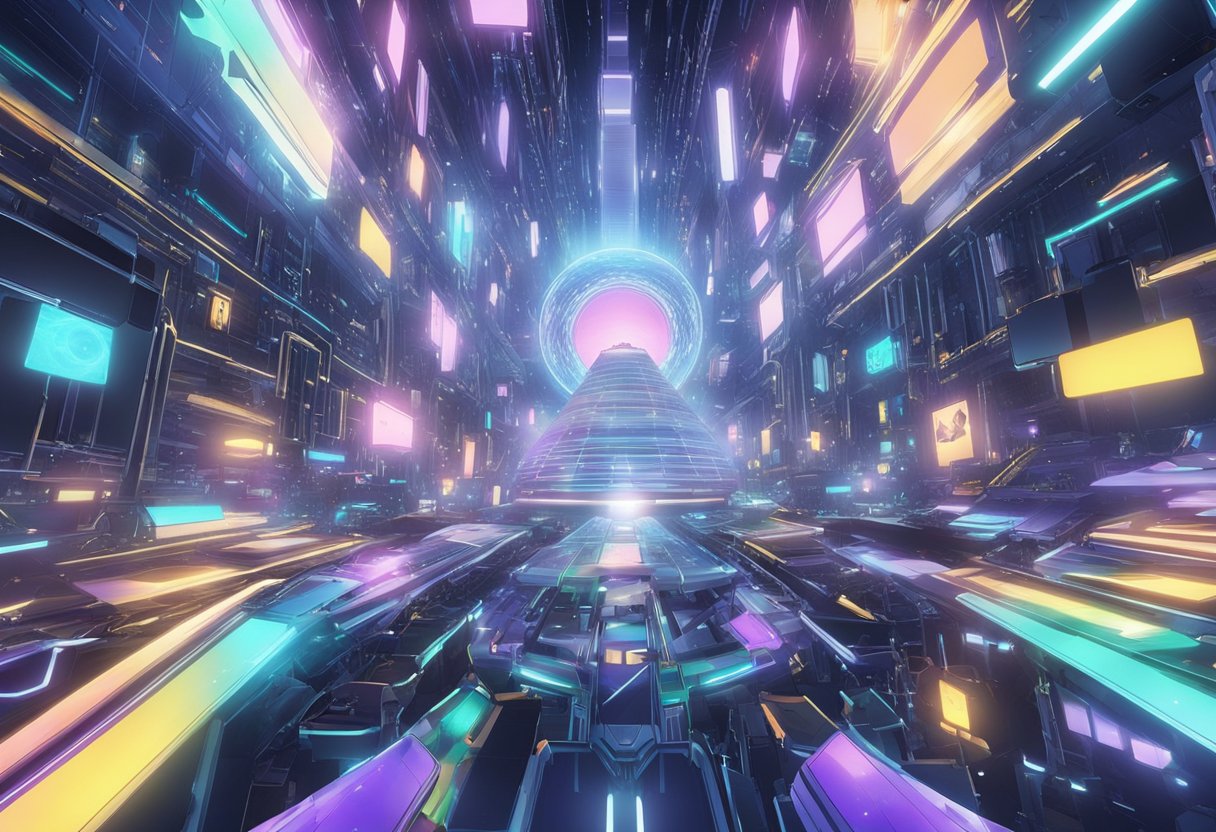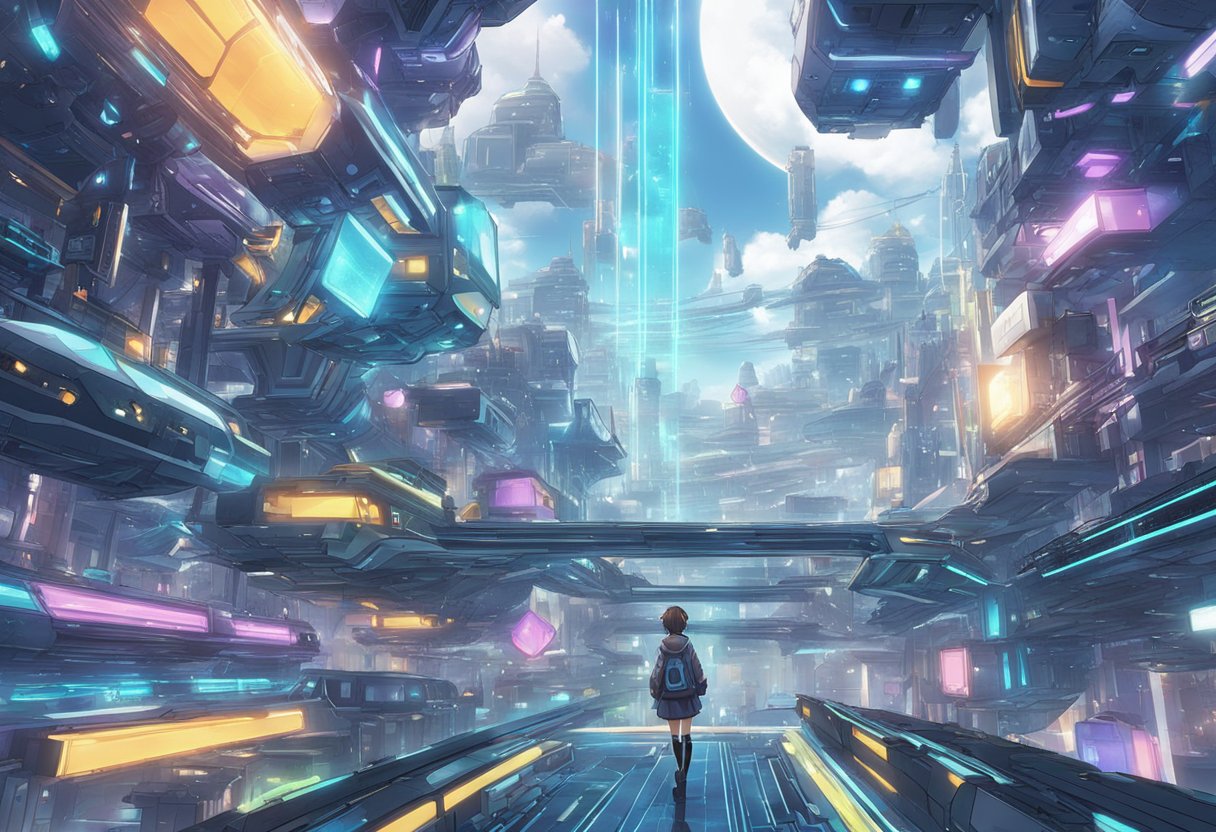It’s official! Brace yourself because a new challenger has appeared in the AI video arena, and it’s bringing some serious heat. A new OpenAI Sora rival just landed for AI videos – and you can use it right now for free. Yes, you heard that right. No need to break the bank to try out this nifty new tool. It’s taking the AI scene by storm and making video creation easier than ever.

This fresh competitor to OpenAI’s Sora isn’t shy about showing off its impressive skills. While Sora can generate videos up to a minute long, this new rival, known as Kling AI, is stretching those video lengths to a cool two minutes with 1080p quality. For those who prefer TikTok-style AI video magic, Kling AI might just be your next favorite toy.
Kling AI doesn’t just stop at longer videos. It brings the fun and creativity directly to your fingertips. Available for free on the KWAI iOS app, it’s ready to turn your wildest video dreams into reality. So why stick with just one tool when you can explore this new, powerful option for AI video creation?
Dawning of a New Challenger

The competition in AI video generation has ramped up with new models entering the fray. This new entrant offers powerful capabilities and is free to use, raising the stakes for all players.
Meet the New Contender
In a twist that has AI enthusiasts everywhere buzzing, a new AI model has emerged to challenge OpenAI’s Sora. Developed by Kuaishou Technology, Kling promises to stun users with its lifelike video generation from simple text prompts. Dubbed the “Sora Killer,” it is clearly not here to play nice.
Kling can create real-looking videos, making it an exciting tool for content creators who need quality work without effort. The fact that it’s available for free makes it even more enticing. Compared to OpenAI’s model, which limits video length to 60 seconds, Kling seems to offer a more flexible and robust option.
The Free-for-All Battle Begins
As OpenAI’s Sora continues to wow with its incredible realism and minute-long clips, Kling has entered the AI battleground, ready to throw down the digital gauntlet. The competition between these models is not just about who can create the most realistic videos, but also about accessibility. Offering a free, robust tool like Kling opens up the arena to more users.
The free model disrupts the market, making advanced AI video tools accessible without a paywall. It levels the playing field, allowing anyone to generate professional videos. This fierce battle between Sora and Kling will push both OpenAI and Kuaishou Technology to innovate faster and better, benefiting users the most.
Will Kling overtake Sora, or will it simply motivate more advancements? Only time will tell as we watch the AI video landscape evolve.
Behind the Scenes of AI Wizardry

Creating AI videos isn’t just about flicking a wand. It involves complex processes, from developing new algorithms and handling vast amounts of training data to ensuring the safety and efficacy of the systems.
Cutting-Edge Concoctions
The magic of AI videos starts with the creation of new algorithms. Developers mix various techniques like deep learning and neural networks to cook up AI models that can understand and generate videos from text. Think of it as chefs mixing spices to create a perfect dish. This careful crafting ensures the AI can produce highly realistic and imaginative results, making it seem like the model itself has a creative mind.
Training Data Tactics
Training data is the secret sauce in AI wizardry. Sora and its rivals, like Dream Machine, rely on millions of video clips, images, and text descriptions to learn what looks real and what doesn’t. This extensive training helps the AI systems make videos that are not only convincing but also aligned with user prompts. Imagine trying to teach a parrot to mimic not just sounds but entire scenes. It’s a monumental task, but essential for achieving top-notch video quality.
The Role of Safety in Magic Making
Safety is paramount in AI wizardry. To prevent mishaps, AI models undergo rigorous testing. Red teamers, or AI “safety wizards,” challenge the system to identify vulnerabilities or biases. This careful testing ensures that the AI doesn’t produce harmful or misleading content. Just like a potion master double-checks their brew to avoid explosions, these experts make sure the AI behaves as intended, even under pressure.
Character Creation Capers
Creating memorable characters has never been easier. With AI tools like OpenAI’s Sora and its rivals, you can bring your wildest text prompt ideas to life.
From Text Prompt to Broadway Star
Imagine typing a few words and voilà, an animated character appears. This magic is possible with text prompts used in AI models like OpenAI’s Sora and its competitor, Kling. Users can describe their character’s appearance, clothing, and even their quirky traits.
For example, inputting “A stylish woman walks down a Tokyo street filled with warm glowing neon” creates a detailed character complete with a black leather jacket and a red dress. It’s like casting the lead in your own little Broadway production, minus the drama of auditions!
A Cast of Multiple Characters
Why have one character when you can have a whole cast? AI models now support multiple characters in a single video. With Sora, you can animate complex scenes that include several personalities interacting in vibrant settings.
Think of it as directing your own short-film. Using a text prompt like “animated scene features a close-up of a short fluffy monster kneeling beside a melting red candle” brings unique, photorealistic characters to life. Kling also offers similar functionalities, allowing users to create lifelike videos featuring numerous characters, making sure no one steals the spotlight alone.
This multi-character generation sets the stage for more dynamic storytelling. With a little creativity, you can now create anything from a group of superheroes to a band of goofy aliens, all without needing a big-budget studio.
The Reality of Realism
Sora’s ability to create life-like videos has wowed many, but the realism it offers is both a blessing and a curse. This section will explore the intricacies of this digital prowess and its potential pitfalls.
Real-Looking Residents of the Digital Realm
Sora can generate videos so realistic that you might start questioning reality. The detail is mind-boggling, with textures that make digital faces almost indistinguishable from real ones. It’s like The Matrix, but without the creepy deja vu.
Imagine watching a fluffy monster by a melting candle; its fur seems touchable, and the candle drips wax in such a lifelike way you might try to catch it. These real-looking digital creations can blur the lines, making it hard to separate what’s real from pixel magic.
Accurate Details or Just a Pixel Illusion?
Not all shiny objects are gold, and not all digital details are accurate. While Sora excels at creating visually stunning scenes, sometimes these scenes don’t hold up under close scrutiny. A monster might look fluffy, but upon closer inspection, there could be weird artifacts or inconsistencies.
Some might spot a shadow that doesn’t match the light source or an object that looks a bit too perfect to be true. This level of realism raises concerns about potential misuse, especially in contexts where verifying authenticity is critical. The visuals are convincing, but are they accurate? That’s the million-pixel question.
Setting the Stage for AI Storytelling
AI is revolutionizing storytelling by bringing rich emotions and intricate motion into the mix. Crafting complex scenes for virtual theaters is another game-changer, bringing life-like depth to narratives.
Narrating with AI: A Spectrum of Emotions and Motion
AI models like OpenAI’s Sora and its rival Kling are not just digital puppeteers. They can infuse a story with a vast range of emotions. Picture this: a character is chasing a runaway dog. The AI not only captures the frantic movement but also portrays the anxiety and relief on the owner’s face.
These models can handle specific types of motion. From a delicate waltz to an intense parkour chase, the nuances in movement add layers to the storytelling. They mimic real-world feelings and actions, making characters appear and move more naturally. Think of it as digital Shakespeare, only more accessible and less prone to existential dread.
Crafting Complex Scenes for the Virtual Theater
Creating scenes in AI has become like directing a blockbuster, thanks to these tools. With OpenAI’s Sora, directors can design settings with multiple layers and complex interactions. Imagine setting a scene in a bustling market. The AI ensures every vendor and customer moves uniquely and convincingly, adding realism.
Not just background action, though. The intricacies of a fight scene, where every punch, kick, and fall is realistically depicted, enhance viewer engagement. Kling is also pushing the envelope, rivaling Sora with its precise motion and lifelike video generation from simple prompts. These advances make AI a potent tool in the endless quest for immersive storytelling.
The Artist’s Toolkit
OpenAI’s Sora and its new rival Kling bring exciting tools that are changing the landscape for visual artists, designers, and filmmakers. These AI video tools open new creative possibilities and streamline workflows in unexpected ways.
For Whom the Brush Tool Tolls: Visual Artists and Designers
Visual artists and designers might want to grab their digital brushes because Sora and Kling promise to revolutionize their creative process. With a simple text prompt, these AI models can generate visually stunning videos. Imagine describing a scene in words and watching as the AI brings it to life with striking accuracy and vibrant detail.
Designers can use these AI tools to create captivating animations and dynamic illustrations for clients. Creating a 60-second video with detailed visual elements would normally take hours, but now it’s just a prompt away. The precision and style consistency that these models offer simplify the creative process, allowing artists to focus more on conceptualizing and less on manual creation.
Benefits include:
- Quick generation of video content
- High quality visual output
- Consistent and precise style adherence
The Filmmaker’s New Friend
Filmmakers, say hello to your new best friend! Sora and Kling are here to take some of the heavy lifting off your hands. Crafting a short film or a dynamic trailer doesn’t have to mean sleepless nights editing frame by frame. A simple text description can produce a 60-second video that matches your vision.
Whether you’re making an indie short or a music video, these AI tools offer unprecedented flexibility and time-saving benefits. Filmmakers can experiment with different scene visuals quickly, iterating on ideas without having to go through exhaustive shoots and edits. It’s about letting directors and creative heads unleash their storytelling prowess without getting bogged down by the mundane technical details.
Benefits include:
- Swift scene creation
- Flexibility for experimentation
- Reduced production times
Diving Into the AI Video Market
In this market, users can create videos with AI at varying costs and conditions. Competition is heating up, with exciting tools emerging that offer new features and flexibilities.
The Right to Create: Examining Costs and Watermarks
When diving into AI video creation, there’s a real mix when it comes to cost and watermarks. Some tools let you create magic for free, but your video ends up branded with a watermark. It’s like a digital tattoo shouting, “I’m brought to you by this AI!”
Users could opt to pay up, so the watermark vanishes like Houdini. For instance, OpenAI’s Sora and Kling AI offer premium tiers where the cost includes shiny features and no watermarks. Also, some free demo versions, like Kling’s, might have limited access unless you get on a waitlist. So, whether it’s free with stamps or a paid sleek look, the choice is yours!
The Meta-Morphosis of AI Video Tools
AI video tools are evolving faster than a chameleon on a rainbow. Companies like OpenAI and Kuaishou (behind Kling AI) are pushing the envelope. They offer features like generating videos from simple text prompts, creating detailed scenes, and adding lifelike characters.
What’s jaw-dropping is the level of complexity these tools can handle. Sora and Kling AI can produce intricate camera movements, making it seem like you’ve got a full production crew in your computer. The meta aspect comes from integrating these AIs into various platforms, making video creation accessible to anyone with a decent internet connection and a wild imagination.
Risks and Responsibilities
Using AI to create videos comes with benefits and challenges. It’s exciting to see how powerful tools like OpenAI’s Sora can make video generation easier, but it also opens the door for potential misuse.
The Good, The Bad, and The AI
AI video tools can make content creation a breeze. Think of a scene, type it out, and presto—your video is done! This can be great for filmmakers and businesses. They save time and money, and can experiment more freely.
But wait, there’s more! With great power comes great responsibility. AI can also create misleading or biased content. Imagine deepfakes that look real enough to fool even the sharpest eyes. This could spread misinformation, causing confusion and harm.
Moreover, AI models can unintentionally produce hateful content. Keeping an eye on these tools to prevent misuse is crucial.
Keeping It Real vs. Deepfake Desperados
The rise of deepfakes is another big worry. These are fake videos that look just like the real thing. They can be used to trick people or spread lies. OpenAI recognizes this and plans to use a detection classifier. This tool will help identify videos made by Sora, making it harder for deepfakes to slip through.
Despite these measures, the battle isn’t over. People can still create convincing fakes. It’s up to developers, users, and platforms to stay vigilant. On the bright side, once AI can better catch and flag deepfakes, many risks will be reduced. Still, everyone has a role in keeping things honest.
The Future of AI Video Generation
AI video generation is rapidly evolving, bringing cutting-edge technology closer to our daily lives. As this tech becomes more advanced, it promises both amazing possibilities and significant ethical challenges.
From Sci-Fi to Reality: The Road Ahead
Remember the days when video creation seemed like science fiction? Well, pinch yourself because text-to-video tools are making it real. Companies like OpenAI with their Sora model and Google’s Veo are leading the charge, offering high-definition videos created from mere text prompts.
What’s truly mind-blowing is the speed and quality of these AI models. Just think: in the time it took you to read this, an AI could have generated an entire video clip. These advancements mean content creation is becoming more accessible, innovative, and fast. The future is here, and it’s running at 60 frames per second.
Ethical Implications and Hopeful Innovations
The sci-fi allure of AI video generation comes with ethical responsibilities. As cool as these tools are, they can be a Pandora’s box. Deepfakes, privacy concerns, and content authenticity are serious issues. Ensuring these AI models are used ethically is crucial.
On the bright side, ethical AI can bring tremendous good. Imagine using these tools for educational videos, creating rich visual stories, or even simulating scientific experiments. Developers are keenly aware of these pitfalls and promising solutions, from more robust content verification systems to ethical guidelines.
In short, the future of AI video generation is a thrilling blend of innovation and ethics. Let’s hope we navigate it as smoothly as a well-edited video.
Frequently Asked Questions
So, you’ve heard about this new OpenAI Sora rival that just hit the scene and can’t wait to dive in. Let’s break down some common queries with a dose of humor.
Who spilled the beans about Sora AI, and do they have a tip jar?
The word on the street is from TechRadar. Their news scout might not carry a tip jar, but a thank you wouldn’t hurt!
How do I sweet-talk my way into the Sora AI club?
If you’re looking to get in on the Sora action, head to the OpenAI Sora homepage. A few clicks, a bit of charm, and you’re in!
Is Sora AI really gratis, or is my piggy bank in for a surprise?
Yes, Sora AI is free to use. Your piggy bank can breathe easy. Check out more details straight from the horse’s mouth at OpenAI.
What’s the magic incantation to unlock Sora AI’s secrets?
No magic spells needed. Simply create an account on the Sora website and follow the prompts. Presto! You’re ready to create videos.
Does Sora AI have a secret handshake, or can any Tom, Dick, or Harriet join the party?
Any Tom, Dick, or Harriet can join in without any secret handshakes. Just hop onto the Sora platform and start exploring.
What’s Sora AI’s deal – is it playing hard to get, or can I swipe right on it already?
You can swipe right right away. OpenAI Sora is available now, ready to generate those snazzy AI videos. For more info, visit OpenAI Sora.
